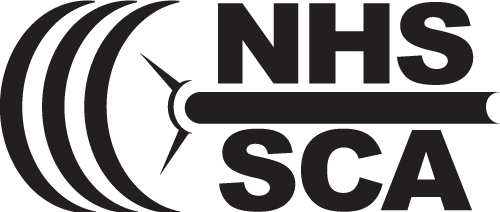Written by: Anthony Rubino MEd, CSCS, SNS, USAW
Unlike some other high school programs, we evaluate the training programs for our athletes throughout the school year rather than just at the end of the year. For each sport, we conduct a macro (3-6 weeks) evaluation and then a seasonal review. I train our staff to work with athletes on a team according to the needs of that sport, and I will meet with coaches to review the year overall.
We follow a simple format of “the good, the bad and the ugly.” The good” are the positive things said at the end-of-year banquet. The strength staff meets with the head coach and any relevant assistant coaches to review the returning roster; possibly captains or leaders will be discussed, as well as any team rules that may need to be omitted or added.
We talk about “the bad”—the things that everyone knows. Examples include: We have no returning starts, We had an abundance of one type of issue or another. “The Ugly” is stuff that keeps us up at night.
We will also discuss scheduling on an annual and macro level. As the training year starts, we first look back upon our relative strength scores, along with speed and power numbers that we have tracked. We track the following:
Anthropometrics Height
- Weight
- Before & after photos
- Speed & Power
- 5-10-5 Shuttle (Stop Watch)
- 5+10 sprint (5 yard build w/ 10 yds measured in MPH – Rower Timing)
- 10+10 sprint (10 yard build w/ 10 yds measured in MPH – Brower Timing)
- 20+10 sprint (20 yard build w/ 10 yds measured in MPH – Brower Timing)
- Vertical Jump (Just Jump Mat)
- 1 Step Approach Jump (Just Jump Mat)
- Broad Jump (Tape Measure)
- Standing Triple Jump (Tape Measure)
- Barbell Lifts
- Clean (1RM or 2 RM)
- Snatch (1RM or 2 RM)
- Push Press (1RM or 2 RM)
- Trap Bar Deadlift (5RM, 3RM or 1RM)
- Clean Grip Deadlift (5RM, 3RM or 1RM)
- Snatch Grip Deadlift (5RM, 3RM or 1RM)
- Standing Barbell Overhead Press (5RM, 3RM or 1RM)
- Narrow Grip Floor Press (5RM, 3RM or 1RM)
- Incline Bench Press (80%RM Rep Out, 5RM, 3RM or 1RM)
- Bench Press (80%RM Rep Out, 5RM, 3RM or 1RM)
- Barbell Reverse Lunge (5RM, 3RM or 1RM)
- Front Squat (80%RM Rep Out, 5RM, 3RM or 1RM)
- Back Squat ((80%RM Rep Out, 5RM, 3RM or 1RM)
- KPIs
- Barbell Relative strength scores
- Power index ( Square root of body weight multiplied by the square root of a vertical jump)
- Total Chin Up (Body weight plus external load)
- Momentum scores (5+10, 10+10 or 20+10 MPH multiplied by body weight)
Each staff member selects appropriate exercises to track in order to drive up sporting performance. Each sport is unique and follows a different set of parameters: year-round training vs. seasonal, training frequency, training expectations set by coaches, etc.
Creating custom training programs for each team is an art. We look at each sport holistically—how often do they train, what is occurring at that particular time of year on campus vs outside sports (club, AAU, etc). The strength staff will sit down and discuss the program we create with all of the appropriate stakeholders (coaches, athletes, etc.) All of our weight room training is GPP. All athletes need to get strong and more powerful. The specificity comes when training on the field—the yardage of sprints, conditioning, etc.
Our program is not dedicated by the age of the athlete. We look at the training age of each individual athlete along with relative strength scores. For example, we will not back squat an athlete until they are able to achieve a relative strength score of 1.25 BW if they weigh 200+ lbs. If the athlete is under 200 lbs., they must achieve a strength score of 1.5 BW. We do the same thing with a trapbar and clean grip deadlift. For all athletes, you must have a relative strength score of 2.0 BW in order to begin Clean Grip Deadlifting.
There are no concerns about getting our athletes to buy into any changes in the training program that we make. We have very high-achieving athletes, and the academics are grueling at our school. So we have smart men (our school enrollment is male only). We always explain why changes have been made, especially when it comes to set and rep schemes. We have never had a problem with compliance.
There are times when we make changes to the training program during the school year because of certain factors that have occurred. We may change the program because of school schedule, or sport schedule (game days, intensity of practice/competition, etc).
When it comes to customizing training programs, it’s important that you know your population. And trust your experience, background experience. By following this path, you can create—and adjust as needed—training programs that will enable your athletes to grow as athletes and individuals.
Anthony Rubino enters his seventh season with the Wildcats as the Director of Strength and Conditioning at Saint Ignatius. He works with all athletic teams at Saint Ignatius year-round. Prior to Saint Ignatius, he was an assistant strength and conditioning coach for Utah State University from 2012 to 2015. In 2012, prior to Utah State, he served at Webber International University as the assistant strength and conditioning coach for the Warriors.



